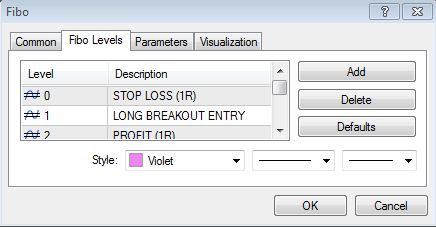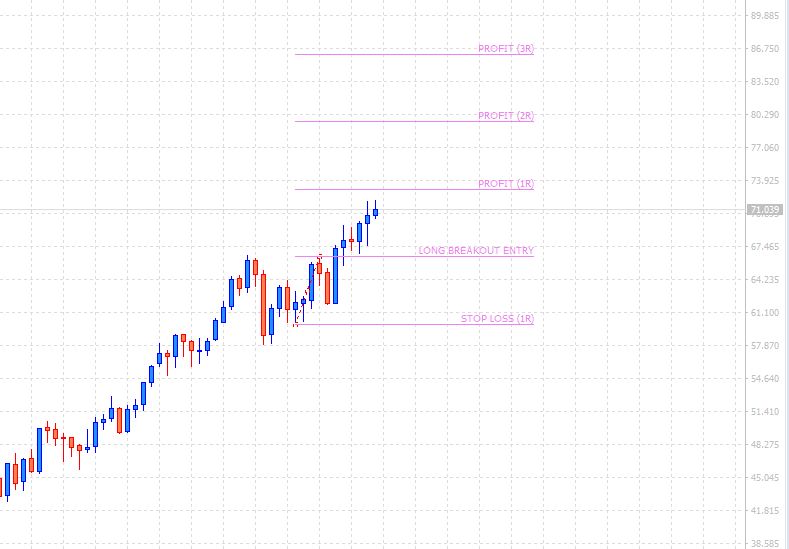Thinking in Risk and R-Multiples and Forex Trading
Thinking in Risk and R-Multiples
When thinking about risk, it’s fair to say that it can be defined by the amount of money that you’re willing to lose if you’re wrong about the market. Or, more specifically how much per unit of your investment (lot size, contracts, etc) if you’re wrong about the position you’ve taken.
We call this the initial Risk, or (R).
One of the most important principles for success in both trading and investing is to always have a predetermined exit point before you enter a position. Trading without this exit point is like driving all over town without stopping for a red light… you may get away with it a few times, but sooner or later disaster will strike.
The exit point you defined when you entered into a position is in fact the whole basis for determining your risk, R, and R-multiples (risk/reward ratios) of your profits and losses.
Now, an exit point can be defined in whatever terms you see fit, be it points, pips, dollars or a percentage. An example from the famous stock trader William O’neil says that whenever you buy a stock, get out when it goes against you 7-8%, where as another trader might propose that you exit the trade as soon as a trade goes 2-3 points against you.
Stops Losses
As mentioned above, a stop is a predetermined exit point. Despite the commonly held philosophy of long-term buy-and-hold trading, there’s no denying that stops prevent disaster.
When the price hits your stop loss, you exit the market – it’s as simple as that. If you buy EURUSD at 1.21 and you have a 7% stop, you exit the trade if the price drops 7%. Now, it’s not quite that simple… when you choose a % stop, you need to determine whether you’re talking about a % movement in price, or a drawdown % in price.
Another kind of stop loss is a trailing stop. This means that as the price moves in your favour, the stop loss moves with it so as to lock in profits along the way, with the hope of catching big trending moves. Some could consider trailing stops a safe form of buy-and-hold.
There are quite a few reasons for using tight stops, and you’ll probably need to use them for a variety of different trading styles. Now, let’s get back to talking about your risk. As mentioned, you need to know when you’re getting out of a position, so as to determine your risk.
More about Risk (R)
To many traders, risk can seem like an indefinable fear that’s often associated with the probability of losing. As an example, one might think that being involved in futures or options is a ‘risk’ or they may be overly optimistic about the trades that they’ve made because they haven’t thought of the worst-case risk. Instead, many give in to the seduction of terms like ‘options, ‘arbitrage’, or ‘naked puts’. Or, they fall for the academic definitions of risk such as volatility. When this occurs often treaders totally ignore the two most significant factors to success, the ‘Rules of Trading’:
- Never open a position in the market without knowing exactly where you’ll exit that position.
And
- Cut your losses short and let profits run.
Ok, so let’s dive a little deeper into the first rule here. As you read, it states that you must always have an exit point when you enter a position. The purpose of an exit point is to help ensure the preservation of your trading capital. It defines your initial risk (1R) in a given trade.
For example.
Say you buy an instrument at $10 and set your exit point at $8. What’s your initial risk? Your 1R here is $2.
Now, you buy the same instrument at $10, but decide that you’re wrong about the trade if it falls to $9.50. Here your initial risk is $.50, or your 1R is $.50.
So it’s starting to make sense now, yeah? R is your initial risk per unit. Bear in mind, this isn’t your total risk, this is simply your risk per unit (per share of stock, futures contract or currency contract)
So what’s your total Risk?
The total risk of a trade is based on your position sizing and how many contracts you actually buy of an asset/instrument.
As an example, you buy 100 contracts of ‘x’ at $1, which would give you a total cost of $100 (100 * $1). Now you only wanted to risk $.20 per contract, which would give you a (100*$.20) total risk of $20 on your $100 position.
Understand R-multiples
Next, we need to understand is that your profits and losses should be related to your initial risk. You ideally want your losses to be 1R or less- meaning that if you say you’re closing your trade when it goes from $1 to .$80, then you’ll actually GET OUT when price moves to $.80. Should you let it drop to $.60, you’re planning to lose double, Ie. 2R. You need to avoid this at all costs.
It should go without saying that you want your profits to be much bigger than 1R. Say you buy an instrument at $10 and plan to get out at $8, so that your 1R loss is $2 per contract. If the trade goes on to make a profit of $20 per contract, you’ve made 10 times what you risked, or a 10R profit.
Understanding how risk works in terms of R helps dramatically when it comes to being selective about the trades you take, and ensuring that there is in fact an edge when it comes to R:R.
For a quick and easy method of tweaking the MT4 fib tool to display your R Multiples simply alter the settings to display the levels as follows:
0 – Stop Loss (1R)
1 – Entry
2 – Profit (1R)
3 – Profit (2R)
etc…
Your fib settings should look something like the image below.
Here’s what the R indicator should like like in MetaTrader 4.
Fast & easy account opening
-
Register
Choose an account type and submit your application
-
Fund
Fund your account using a wide range of funding methods.
-
Trade
Access 300+ CFD instruments across all asset classes on MT4 / MT5
That's it, it's that easy to open a Forex and CFD trading account.
Welcome to the world of trading!
open live account










